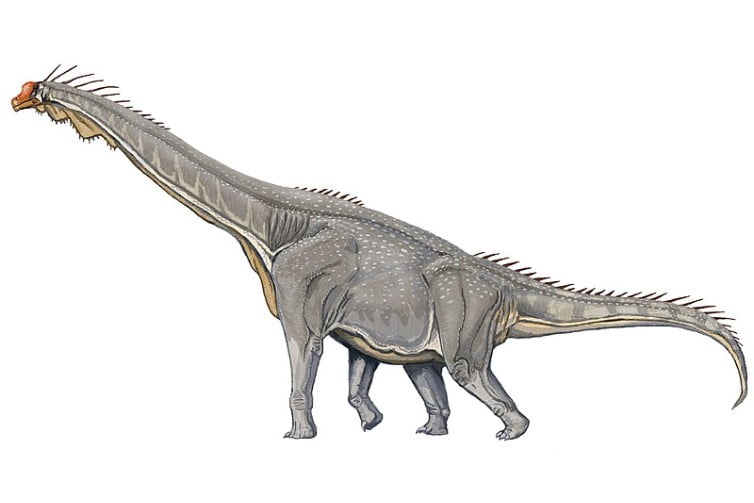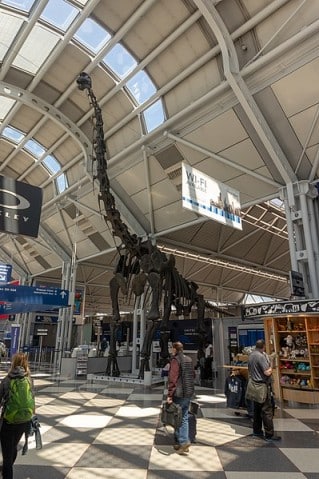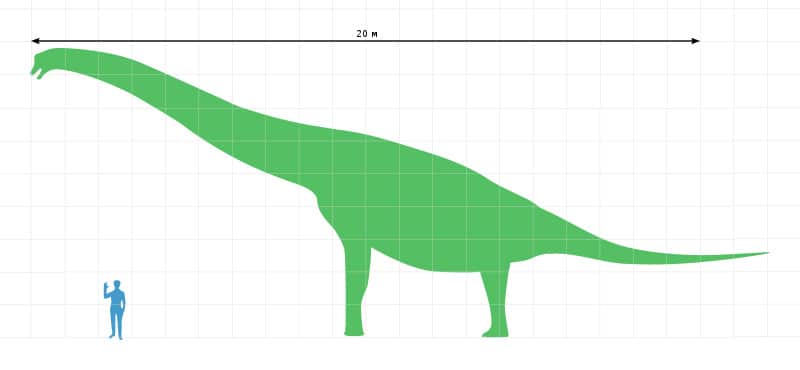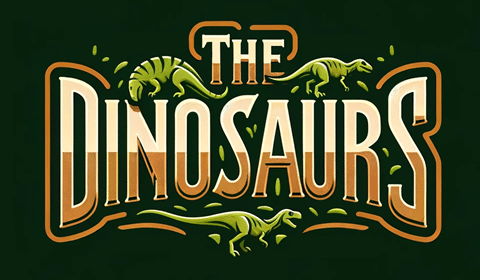Brachiosaurus, whose name fittingly translates to ‘arm lizard’, was a true titan of its time, dominating the landscapes of the late Jurassic period. Its sheer size and unique physical characteristics have made it a subject of endless study and speculation, offering us glimpses into a world that existed over 150 million years ago.
Brachiosaurus is a testament to the incredible diversity and adaptability of life on Earth. Its existence challenges our understanding of biological limits, reminding us of a time when giants roamed the land. As we delve into the world of this herbivore, we will explore its origins, its unique features, and the environment it thrived in, painting a comprehensive picture of this remarkable dinosaur.
Brachiosaurus Key Facts
| Keyword | Fact |
|---|---|
| Brachiosaurus pronunciation | brah-kee-oh-sore-us |
| Meaning of name | Arm lizard |
| Group | Sauropodomorpha |
| Type Species | Brachiosaurus altithorax |
| Diet | Herbivore |
| When it Lived | 155.7 to 145.0 MYA |
| Period | Late Jurassic |
| Epoch | Late/Upper Kimmeridgian to the top of the Early/Lower Tithonian |
| Length | 85.0 ft |
| Height | 40.0 ft |
| Weight | 33.0 to 88.0 tons |
| Mobility | Moved on all four |
| First Discovery | 1900 by Elmer Riggscrew with his team from the Field Columbian Museum |
| Location of first find | Grand River Canyon, Colorado |
| First Described by | 1903 by Elmer Riggs |
| Holotype | FMNH P 25107 |
Brachiosaurus Taxonomy and Timeline

Brachiosaurus, or ‘arm lizard’, derives its name from the unusual structure of its front limbs being longer than its hind limbs. This unique configuration, quite unlike most other dinosaurs, gave it a giraffe-like stance with its head perpetually reaching towards the sky.
In terms of taxonomy, it belongs to the group Sauropodomorpha, which are known for their large size and long necks. Specifically, it is a member of the family Brachiosauridae, which includes other long-necked giants such as the Giraffatitan.
Brachiosaurus lived during the late Jurassic period. This was a time when the continents were still slowly drifting apart, and the climate was generally warm and humid, ideal for the growth of lush vegetation that Brachiosaurus fed on.
The first fossils were discovered in the Grand River Canyon of Colorado, USA in 1900. This significant find was made by Elmer S. Riggs and his crew from the Field Columbian Museum. Since then, additional fossils attributed to Brachiosaurus have been unearthed in various locations. These discoveries have helped to paint a more complete picture of this dinosaur, shedding light on its physical characteristics, behaviors, and the environment it inhabited.
Fossil Evidence
The first discovery of Brachiosaurus fossils were made in 1900 by American paleontologist Elmer S. Riggs and his crew from the Field Columbian Museum. The discovery was made in the Grand River Canyon of Colorado, USA. Riggs described the dinosaur in 1903, marking the official introduction of this new species to the scientific community. The fossils were well-preserved and provided valuable insights into the physical characteristics and potential behaviors of this colossal dinosaur.

Since the initial discovery, additional fossils have been found in various locations around the world. These include Germany, Tanzania, Zimbabwe, and several states in the United States. The number of finds in the United States is particularly notable, with 13 separate discoveries recorded. These additional finds have helped to further our understanding of the Brachiosaurus, providing more detailed information about its size, shape, and potential behaviors.
The types of fossils found have varied, with some finds including more complete specimens than others. However, no matter how small each discovery is, they have contributed to the overall picture of the Brachiosaurus and helped to solidify its place as one of the most fascinating dinosaurs of the Jurassic period.
Brachiosaurus Size and Description
This was a truly colossal creature, one of the largest dinosaurs to have ever walked the Earth. Its unique physical characteristics set it apart from other dinosaurs, making it a fascinating subject of study for paleontologists.
Short description of Brachiosaurus
It was a sauropod, a group of dinosaurs known for their large size, long necks, and long tails. Its most distinguishing feature was its front limbs, which were longer than its hind limbs. This gave it a giraffe-like stance with its head perpetually reaching towards the sky. Its body was robust and built to support its immense weight. Its tail was long and slender. It moved on all fours and, despite its size, it is believed to have been quite agile.
Size and Weight of Type Species

The size has been a subject of much debate among paleontologists. Some estimates suggest that it could have reached lengths of up to 85 feet and heights of up to 40 feet. However, these figures are based on extrapolations from incomplete fossil evidence and the actual size may have varied.
In terms of weight, it was undoubtedly one of the heaviest dinosaurs. Estimates vary a great deal, pleacing the weight somewhere between 33 to 88 tons. However, as with length and height, these figures are based on extrapolations and may not be entirely accurate.
Despite these uncertainties, there is no doubt that Brachiosaurus was a truly colossal creature. Its size alone would have made it an unmistakable presence in its environment and its unique physical characteristics only add to its intrigue.
Brachiosaurus Games
If you want to test your knowledge about Brachiosaurus, here is a fun quiz you can play. Don’t worry if you don’t get all questions right, it is a learning opportunity! Have fun!
Don’t forget to try our other games as well!
Brachiosaurus in Detail
This was a creature of extraordinary design. Its long neck was supported by a series of large, robust vertebrae that allowed it to reach vegetation that was inaccessible to other herbivores. This unique adaptation not only gave Brachiosaurus a competitive edge in terms of food resources but also contributed to its distinctive, giraffe-like silhouette.
One of the most notable specimens of Brachiosaurus is the “Berlin specimen,” discovered in Tanzania. This specimen is one of the most complete Brachiosaurus fossils ever found and has provided invaluable insights into the dinosaur’s physical characteristics and potential behaviors. The Berlin specimen has also played a crucial role in helping paleontologists understand the dinosaur’s unique skeletal structure, particularly its long neck and front limbs.
It was a creature of immense size and strength but it was also a creature of remarkable adaptability. Its unique physical characteristics, such as its long neck and front limbs, were not just for show; they were key adaptations that allowed it to thrive in its environment. These features, combined with its sheer size, made the Brachiosaurus a formidable presence in the late Jurassic landscape.
Brachiosaurus Illustration Sketch
In its Natural Habitat
Brachiosaurus lived during a time when the Earth was a very different place. The Late Jurassic and Early Cretaceous saw the continents slowly moving towards their current positions and the climate was generally warm and humid. This was a time of lush vegetation, which provided ample food resources for this herbivorous dinosaur.
As an herbivore, it fed on the abundant plant life of its time. Its long neck allowed it to reach vegetation that was out of reach for other herbivores, giving it a competitive edge. It’s likely that it fed on a variety of plants, including ferns, cycads, and possibly even trees.
It was a creature of immense size and its presence would have undoubtedly had a significant impact on its environment. Its feeding habits may have shaped the vegetation patterns of its habitat and its movements could have influenced the landscape. Despite its size, the Brachiosaurus was likely a relatively peaceful creature that lived in harmony with its environment.
Interesting Points about Brachiosaurus
- It had a giraffe-like stance, with its front limbs being longer than its hind limbs. This unique configuration allowed it to reach vegetation that other herbivores couldn’t.
- Despite its colossal size, it is believed to have been quite agile as it moved on all fours.
- This dinosaur lived during the late Jurassic period, a time when the continents were still slowly drifting apart, and the climate was generally warm and humid.
- The first discovery was made in 1900 in the Grand River Canyon of Colorado, USA.
- One of the most notable specimens is the “Berlin specimen,” which is one of the most complete Brachiosaurus fossils ever found.
Contemporary Dinosaurs
Brachiosaurus shared its world with a vasdtly different group of contemporaries. Among these were Allosaurus, Stegosaurus, Diplodocus, and Camarasaurus, each contributing to the intricate dynamics of their shared environment.
Allosaurus, a large threatening predator, might have viewed Brachiosaurus with a mixture of awe and ambition. The size difference between them was significant, with Brachiosaurus being considerably larger. Yet, Allosaurus was a creature of cunning and agility, its life a constant pursuit of survival. It’s conceivable that these two dinosaurs had encounters, a representation of the complex dance of predator and prey that played out in their shared world.
Stegosaurus and Diplodocus, on the other hand, were more likely to have been fellow travelers in the realm of the herbivores. Stegosaurus, with its distinctive row of plates and spikes, was smaller than Brachiosaurus but no less impressive. Diplodocus had its elongated neck and whip-like tail and would have formed a striking contrast in body shapes and sizes as they grazed alongside Brachiosaurus. Their coexistence paints a picture of a diverse and vibrant herbivore community.
Camarasaurus, another large herbivore, shared many similarities with Brachiosaurus. Both were large, long-necked dinosaurs, and they likely moved in the same circles and perhaps even competed for the same food sources. Their relationship underscores the diversity even within the same ecological niche, each species a unique solution to the challenges of survival. Together, these dinosaurs form a fascinating snapshot of life in the Jurassic period.
Frequently Asked Questions
The name translates to ‘arm lizard’, a reference to its unique front limbs which were longer than its hind limbs.
It lived during the late Jurassic period between 155.7 and 145.0 million years ago.
It was a herbivore, feeding on the abundant plant life of its time.
The first fossils were discovered in 1900 by American paleontologist Elmer Riggs and his crew from the Field Columbian Museum. The discovery was made in the Grand River Canyon of Colorado, USA.
Despite its colossal size, it is believed to have been quite agile, moving on all fours.
It had a unique physical configuration, with its front limbs being longer than its hind limbs. This gave it a giraffe-like stance and allowed it to reach vegetation that other herbivores couldn’t.
Sources
- https://www.ajsonline.org/content/s4-15/88/299
- https://onlinelibrary.wiley.com/doi/abs/10.1111/j.1096-3642.2012.00853.x
- https://www.tandfonline.com/doi/abs/10.1080/14772019.2012.667446
- https://www.tandfonline.com/doi/full/10.1080/02724634.2016.1269539https://pubmed.ncbi.nlm.nih.gov/28480136/#:~:text=Vouivria%20is%20a%20basal%20brachiosaurid,the%20stratigraphically%20oldest%20known%20titanosauriform.
Article last fact checked:Joey Arboleda, 06-10-2023
Featured Image Credit: Copyright (c) Thedinosaurs.org
